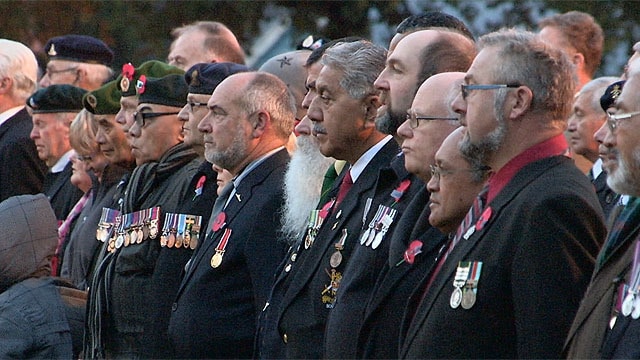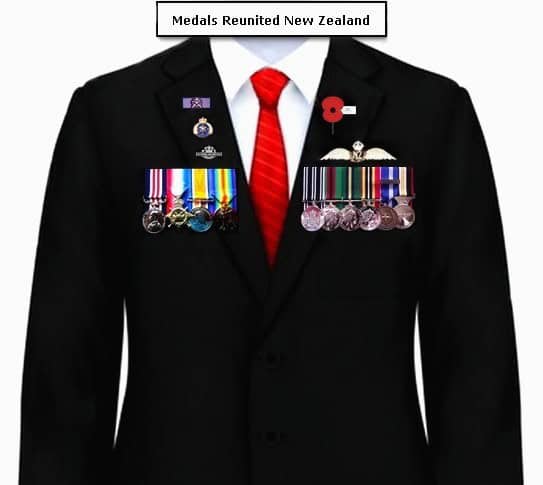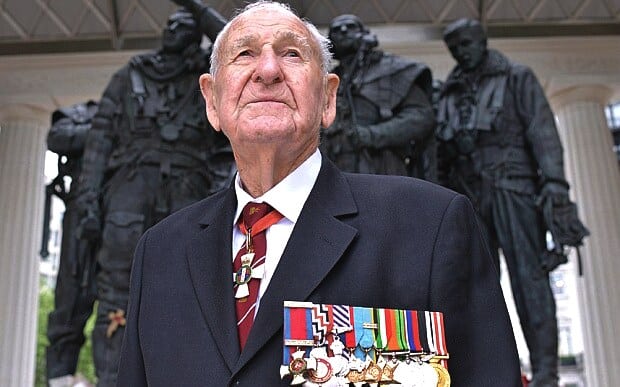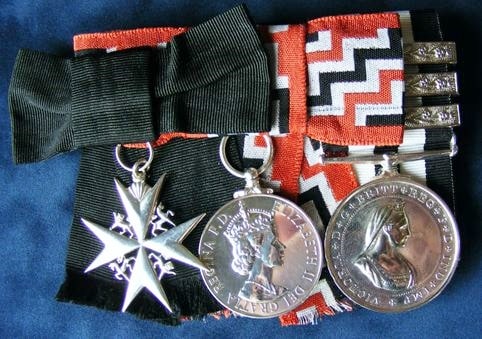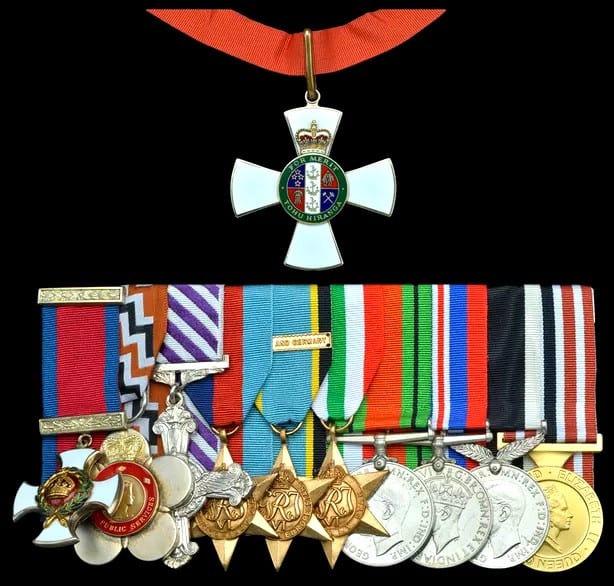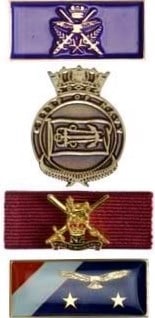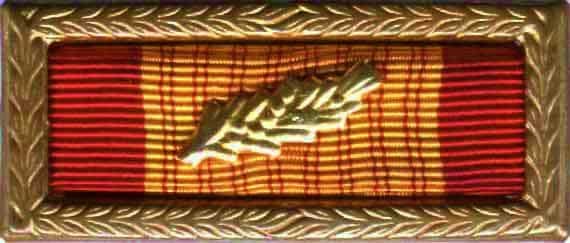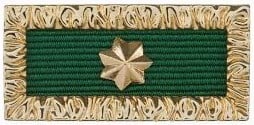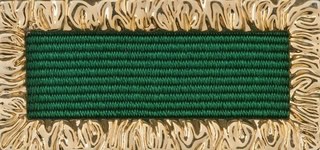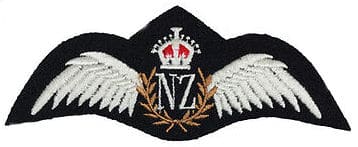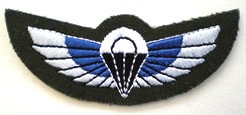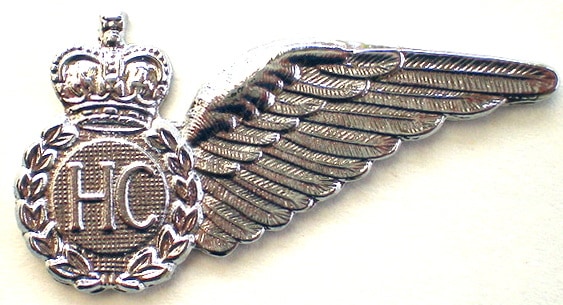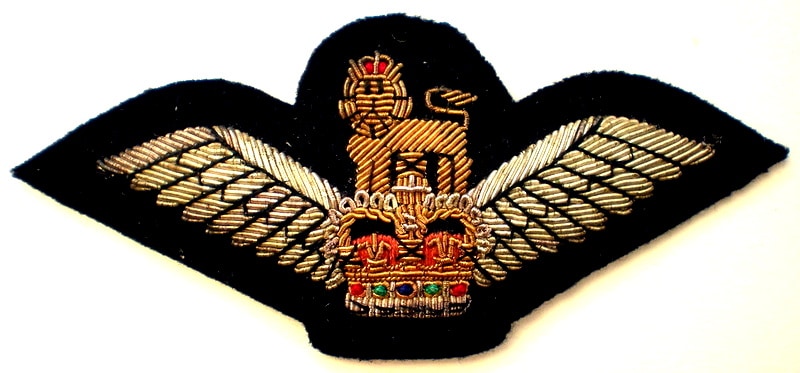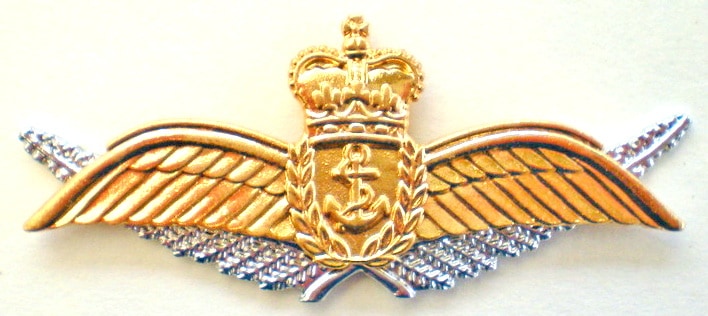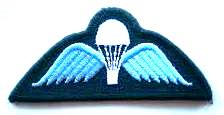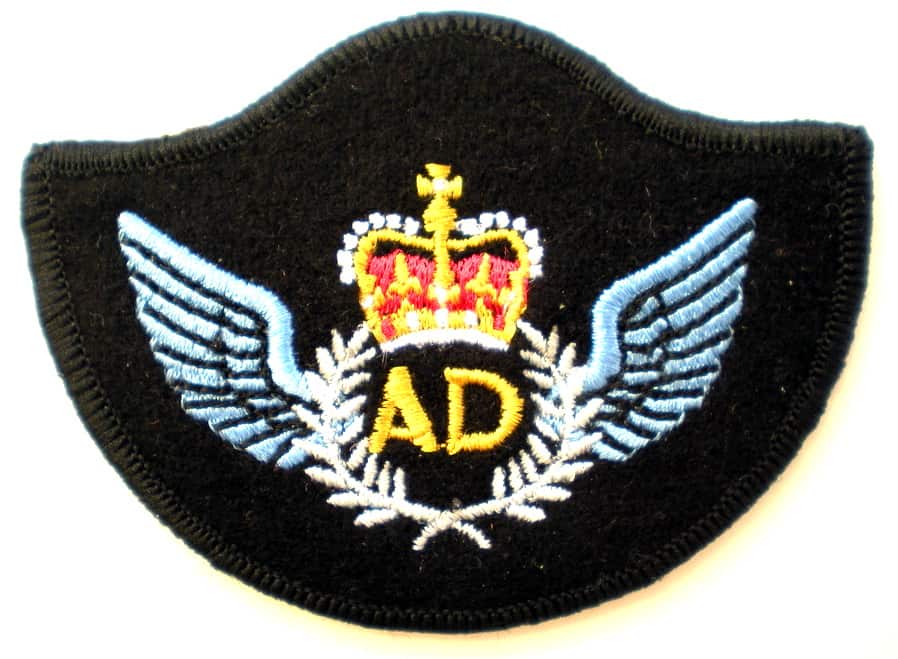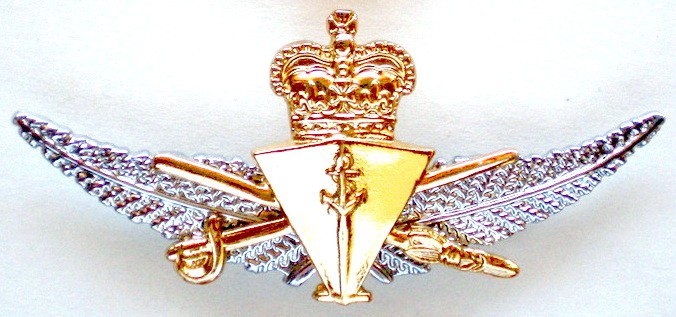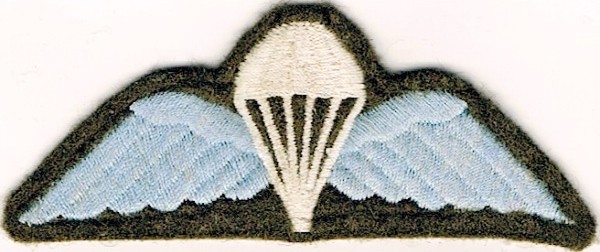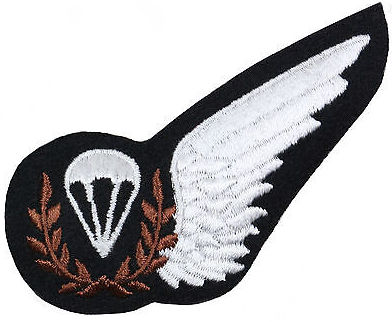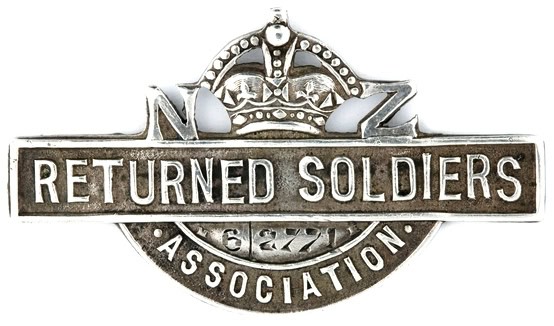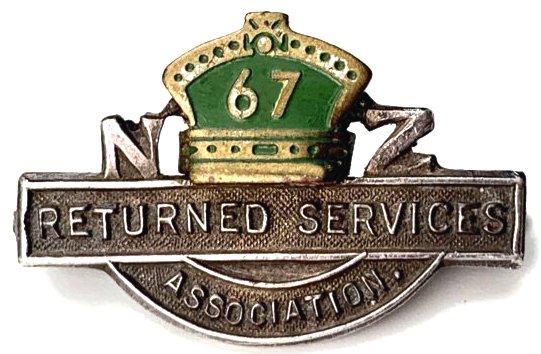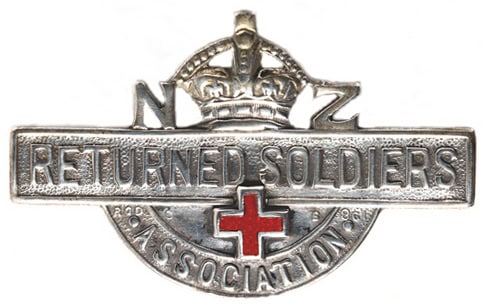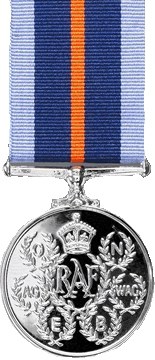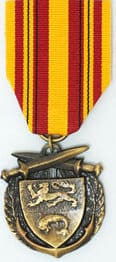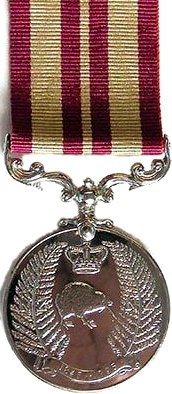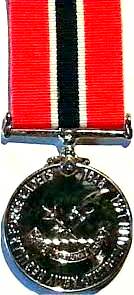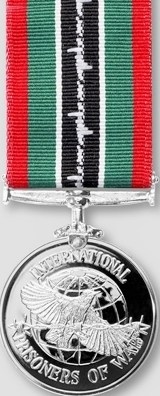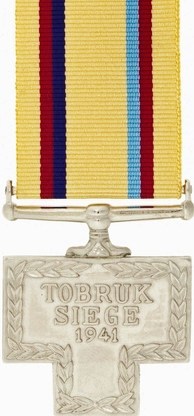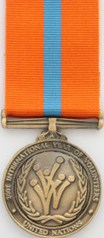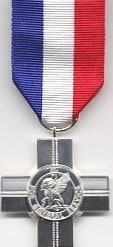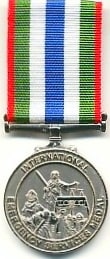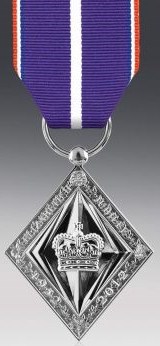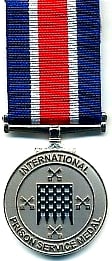Protocol, Customs and Regulations for
New Zealand Citizens Wearing Official Medals & Badges
Contents
- Interpretation
- OFFICIAL Medals & Badges
- UNOFFICIAL Medals & Badges
- Wearing Emblems with Medals
- Compliments & Wearing Medals
- Medal Guidance for Families
- NZ Royal Honours System
- New Zealand Order of Wear
- Medal Fraudsters & Military Impostors
1. Interpretation
- Honour – An honour is an appointment to an order of chivalry such as any of the Royal (dynastic) awards conferred by the Sovereign, e.g. Order of New Zealand (limited to 20 living members).
- Award – An award is a generic term for honours, orders, decorations, medals and commendations given to a person or organisation. These may be conferred by the Sovereign’s delegate (Governor General or Prime Minister), or by a recognised international organisation.
- Order – An Order refers to a dynastic award conferred by the Sovereign for exceptional devotion/service to the Crown or State. Orders can take the form of a neck decoration (also called a collar), breast star and cordon/sash or combination thereof, or a breast decoration worn in the same position as a medal – on the left chest.
- Decoration – Decorations are awards made for acts of valour and gallantry in the face of the enemy (combat), bravery (not in in the face of the enemy, distinguished/conspicuous service or exceptionally meritorious service in combat. These are most often shaped as a star or cross.
- Medal – Any award that is not an Honour or Decoration, official or unofficial. Usually circular, a medal is designed to be suspended from a ribbon bar or bow and is worn on the left chest.
- Official – Means any order, decoration, medal or commendation approved for wearing by the Sovereign or Delegate (Governor General), or the Government of New Zealand, and which is listed in the NZ Order of Wear.
- Unofficial – Any order, decoration, medal not approved for wearing by the Governor General or NZ government, i.e. not listed in the NZ Order of Wear.
- Foreign – An award received from any country where HM the King is not Head of State.
- Insignia – A collective term used to refer to the badge of a dynastic order, whether a neck decoration/collar, breast star, cordon/sash or a medal that represents an Honour, Order, Decoration, Medal or Commendation.
- Unit Citation – An official badge worn by members of a unit that has been commended for exceptional service.
- Commendation – An official badge awarded for exceptional service to an individual or unit.
- Badge – For the purposes of distinction on this website means any official (approved) badge of Merit or Qualification of the NZDF, other uniformed services of the Crown, or of an armed force or service where the Crown is not the Head of State, and that has been authorised for wearing by subject persons, e.g. unit citation, commendation, pilot/aircrew brevets, naval brevets, submariner, parachutist, air dispatcher, clearance/diver, ordnance demolition, sniper, marksman etc.
2. OFFICIAL Medals & Badges
Definitions:
“Official uniform” – A naturalised New Zealand citizen in a uniformed service of the Crown (e.g. New Zealand Defence Force, New Zealand Police, New Zealand Customs Service and the Public Prisons Service, Department of Corrections) is to seek the permission of the head or chief executive of the agency of which the recipient is a member, such as the Chief of the Defence Force or Commissioner of Police, to wear a foreign award denoting the same, on an official uniform.
“Official medal” – Any award listed in the DPMC (Honours Unit) New Zealand Order of Wear Rules.
“Persons in service of the Crown” – Members of the Executive Council, members of Parliament, members of the Judiciary, employees of public service departments, employees of non-public service departments (including the New Zealand Defence Force and the New Zealand Police), Officers of Parliament, and members of the New Zealand diplomatic service, including persons in the service of the Crown on a temporary, part-time or contracted basis.
Rules for acceptance and wearing
DPMC Honours Unit, Sep 2023: The Sovereign approves the rules relating to the acceptance and wearing of Commonwealth, foreign and international honours by New Zealand citizens. The Department of Prime Minister and Cabinet (DPMC) Honours Unit provides proactive advice for the correct wearing of awards, to recipients of New Zealand Royal honours at the time of receiving their honour.
Official medals of a Commonwealth or Foreign country
DPMC Honours Unit, Sep 2023: No approval is required for the acceptance and wearing of official medals issued by a Commonwealth or foreign country, or international organisation to commemorate previous military or operational service approved by the government, including peacekeeping operations, by former New Zealand military and other personnel. The wearing of such medals on official uniform by serving personnel of the New Zealand Defence Force requires the approval of the Chief of Defence Force.
Wearing OFFICIAL medals
DPMC Honours Unit, Sep 2023: Wearing official medals in New Zealand is governed by Rules set down by the Honours Unit. The Rules provide guidance for wearing official awards, as set down in the NZ Order of Wear (refer reference). The Order of Wear is a convention, not a legal authority, and there is no power to stop civilians or ex-Service persons wearing insignia incorrectly, or wearing insignia in conjunction with unofficial medals, if they choose to do so.
Protocol for wearing medals has been derived from historical precedence and accepted practices that have been devised and honed from British royal and military organisations, being the day to day users required to fully comply with an Order of Wear.
The NZDF and uniformed services employed by the Crown produce agency specific regulations for wearing honours and awards by their personnel and which, for operational or ceremonial requirements, may be at variance to the protocol civilians and ex-Service personnel are expected to observe.
While ex-military members are no longer bound by Defence Force Orders to comply with the Order of Wear, they can be an invaluable source of guidance to the civil community on the correct protocol and practices to be observed when wearing official medals and badges, as set down in the Order of Wear. The protocol and practices observed by the NZDF are in the main, identical to those which the citizens of New Zealand can be expected to observe.
Living medal recipients ONLY wear their medals suspended from a medal brooch bar on the LEFT chest. Males and females adhere to the same method of wearing with the exception that some female honours have the award ribbon fashioned into a Ribbon Bow. Family members can wear a deceased relatives brooch bar medals on the RIGHT chest (see Para 6. below “Medal Guidance for Families”).
Badges
Insignia Lapel Badges – Lapel badges of the New Zealand Orders, Gallantry and Bravery awards, the Queen’s Service Medal (QSM), New Zealand Antarctic Medal (NZAM), and Distinguished Service Decoration (DSD) are worn at the discretion of the holder on the LEFT lapel or the left shoulder/lapel of female dress, on those occasions when the full-size insignia is not worn (e.g. with evening dress). Lapel badges are not worn when in uniform. Only one lapel badge or rosette should be worn.
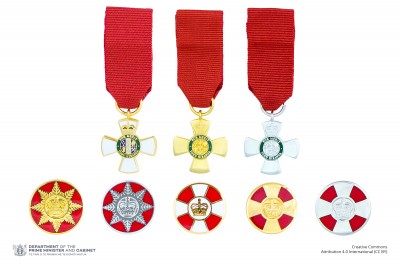
Commendations & Citations
Awarded to NZDF military and civilian personnel, and units, who perform to an ‘excellent’ level over a sustained period, or during a specific event or project. Represented by a badge approximately the size of a medal ribbon, commendations are presented with a manuscript narrative outlining the circumstances leading to the award.
NZDF COMMENDATIONS – to an individual military or civilian members for excellence in service.
Top to bottom: Chief of Defence Force [New Zealand] (CDF ), Chief of Navy (CN), Chief of Army (CA), Chief of Air Force (CAF) Commendations.
UNIT CITATIONS – an organisational or group award made to military units, or civil organisations / groups (uniformed or not) who perform to an ‘excellent’ level either over a sustained period or during a specific event or project. NZDF Approved Foreign Unit Commendation & Citations in current use:
US Army Meritorious Unit Commendation
- Awarded to 161 Battery RNZA – Vietnam (1966) – 1966
The Republic of Vietnam Cross of Gallantry with Palm Presidential Unit Citation
- Awarded to 161 Battery RNZA – Vietnam (1965-1971) – 1971
- Awarded to 2 NZ Army Training Team Vietnam [2 NZATTV] (1965-1971) – 1971
US Navy Presidential Unit Citation
- Awarded to 1 NZSAS – Afghanistan – 2004
Korean Presidential Unit Citation
- Awarded to 16 Field Regiment RNZA – Kapyong, Korea (1950-51) – 2011
Australian Unit Citations
Unit Citations that acknowledge the value of collective effort in military operations are award for Gallantry and Meritorious Service. Unit citations bearing a central Federation Star denote an award made to participants of the unit who were present in the action being recognised. The Citation without the star denotes the wearer joined the unit after the award. The Citation is worn by all personnel joining a unit for the life of the unit. Personnel posted to a unit that has been awarded a Gallantry or Meritorious Citation wear the Citation minus the Star.
The Unit Citation for Gallantry is awarded to a unit for ‘extraordinary gallantry’ as a team in warlike operations. It is not awarded for acts of gallantry performed by an individual or by small groups of personnel. Awarded in 2010 to D Company, 6th Battalion, Royal Australian Regiment for the 1966 Battle of Long Tan in Vietnam. Approval was also granted for three New Zealand Army personnel to accept and wear the this Citation for Gallantry for their participation in the battle.
- In 2019, the Citation for Gallantry was awarded to 161 Battery RNZA for their exceptional service in Vietnam (1968). This is the first Australian Unit Citation for Gallantry offered to a New Zealand military unit. Approximately 120 members of 161 Battery, RNZA who participated in the battles of Fire Support Bases “Coral” and “Balmoral” between 12 May and 06 June 1968, as well as other New Zealand Armed Forces personnel directly involved in one or both battles, received the award. Fourteen veterans of the New Zealand Army in Vietnam were the first to be awarded this Australian Unit Citation for Gallantry.
The Citation minus the Star, is worn by all personnel who join the unit after the Citation has been awarded.

The following New Zealand units have been awarded the Citation for Meritorious Service (with Star):
1. 3 Squadron RNZAF – INTERFET, East Timor in 2002.
2. Force Communications Unit (FCU), Cambodia (1992-93) in 2015.
The Citation minus Star, is worn by all personnel who join the unit after the Citation has been awarded.
2011 Canterbury-Christchurch Earthquake Citation (CCEC) – NZ Police

On 26 June 2012, the Commissioner of Police announced that a “2011 Canterbury Earthquake Citation” (CEC) would be issued to acknowledge approximately 3,200 members of the NZ Police who worked in or were deployed to Christchurch during the state of emergency period of 22 February to 30 April 2011. The CEC is worn by Police personnel as a dress distinction on the RIGHT side of their uniform.
The CEC is recognised as an ‘official’ award for NZ Police only. The CEC was also given to a number of military and civilian persons and organisations who assisted in the aftermath. It is not permitted to be worn by serving or former NZDF personnel when in military uniform. It may not be worn by the relative of a deceased person. It may be worn in civilian dress as outlined above.
Wearing a Personal Commendation or Unit Citation
- Chief of Defence Force, Service Chiefs’ and New Zealand Defence Force Commendations, e.g. CDF, Chief of Navy (CN), Chief of Army (CA), Chief of Air Force (CAF), NZDF Commendations and Unit Citations (Gallantry or Meritorious Service) are worn by uniformed persons and positioned on the RIGHT side of the uniform corresponding to the position of medal ribbons on the left.
- Commendations and Unit Citations are official military awards however are not included in the NZ Order of Wear and therefore, worn at the discretion of the recipient.
- In civilian dress (suit/jacket, ladies equivalent), when full-size medals are worn, the protocol for wearing a Commendations or Citations is on the RIGHT lapel (ladies equivalent) above any other lapel badge. On all other occasions (miniatures medals or no medals) they are worn on the LEFT lapel. (see also NZ Veterans Badge below)
- If a Commendation and a Unit Citation are worn together, the Commendation takes precedence and is positioned above the Citation. If two or more Citations are worn together, the first awarded is positioned on the lapel closest the centre of the chest, the others beside it to the right.
- Commendations and Citations are not to be worn by a deceased person’s relatives.
Official Badges – Whilst not part of the NZ Order of Wear protocol suggests some NZ military brevets and badges awarded for career qualifications gained when in uniformed service of the Crown, may be worn when appropriate, i.e. when medals are worn. The prime example is a military Pilot’s brevet: Navy, Army*, and Airforce as worn on the chest. For Navy and Airforce pilot’s the brevet may be considered their raison d’etre, their career. As the NZ Army no longer has an Air Corps, it does not have career pilots other than those retired. Half-wing brevets may well be the raison d’etre for some aircrew appointments but hardly in the same league as a pilot’s demanding qualification. They may also represent a short term, needs based qualification even though the brevet remains a uniform fixture for the duration of a person’s uniformed service.
Bottom line ? – wearing an official military brevet or badge of any sort with medals is a personal choice.
Examples of official brevets & badges: The Flying Badge (RNZN/ARMY/RNZAF – pilot “wings”), Principle Warfare Officer (RNZN), Air Dispatcher, aircrew brevets and qualified Parachutist wings.
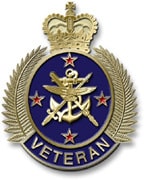
- The NZVB is worn on the RIGHT lapel and takes precedence over any NZRSA membership badges, i.e. worn above the NZRSA membership badge however remains subordinate to any Commendation or Meritorious Unit Citation if worn.
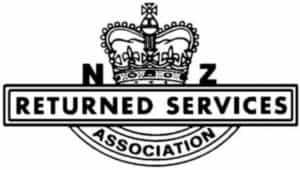
Reference: https://www.rsa.org.nz/assets/Basecamp/Rememberance/Ceremonial_Planning_guide.pdf
WW1 – Returned Soldier’s Badge
The RSA founder Donald Simson suggested a universal badge for returned soldiers which was subsequently approved at the foundation conference in 1916. A contract to manufacture the Returned Soldiers Badge (as it was originally entitled) was won by Wellington firm of Mayer and Kean in December of that year. The crown represented the associations loyalty to the monarch and is changed to represent the that of the reigning sovereign. In terms of badge etiquette, the decision to wear the badge on the RIGHT lapel was influenced by the fact that military decorations and medals are worn on the left chest. The ring on the rear of the badge was to accommodate a safety chain. The ‘big badge’ was reduced to the small size we are most familiar with in 1927.
From 1940, the badge was reduced in size and had a coloured date year attachment that clipped around the crown. This was to identify at a glance those who were current financial members (subscription paid). Reference: After the War: The RSA in New Zealand by Dr. Stephen Clarke
WW1– King’s Silver War Badge (SWB). The “King’s Silver”, also variously known as the “King’s Silver War Badge, Services Rendered Badge, Wounds Badge and Honourable Discharge Badge, was awarded to military personnel (mainly soldiers) discharged from military service on the grounds of wounds, injury or illness sustained during war service.
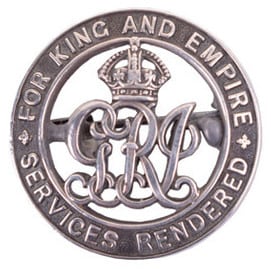
A secondary reason for the SWB’s introduction was in response to a practice that developed in the early years of the war where some citizens took it upon themselves to confront and publicly embarrass men of fighting age who were not in uniform, or whom they believed to be ‘shirking’ war service (avoiding military service). Those confronted were often presented (or mailed) a white feather being a symbol for cowardice.
As the war progressed and the numbers of younger servicemen discharged from His Majesty’s Forces escalated because they were no longer fit to fight, the older men of the nation were pressed into conscripted service. This exacerbated the ill-feeling, particularly among women, who viewed all younger men walking the streets as able to fight, so why had their husbands been taken? Wounds of course, or the reason a man had been discharged, were not always outwardly obvious and so they had to tolerate the unfair and unwarranted abuse and belief they were cowards. Thus, the SWB was introduced as visible evidence a man had returned from active service, invalided and no longer fit to fight. Others might have been be administratively discharged from the NZEF (ineffective, disciplinary reasons), but definitely were not ‘shirkers.’
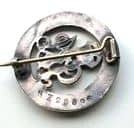
Each badge was uniquely numbered with a batch issue number allocated from a Register maintained by the War Office. For the other countries of the Empire, each maintained their own register of names and issued badge numbers which were also copied to the War Office. The register recorded to which person each badge had been issued, its prefix letter(s) and number. Countries who adopted the SWB had the following prefix letters: United Kingdom (no prefix initially, later ‘B’), Canada ‘C’, New Zealand ‘NZ’, Australia ‘A’, South Africa ‘SA’ and Rhodesia ‘R’. New Zealanders did not receive the SWB until April 1918 when the letters NZ were approved to prefix the badge’s number which was impressed on reverse of the badge.
Worn on the right lapel in civilian dress only, the SWB was forbidden to be worn on military uniform.
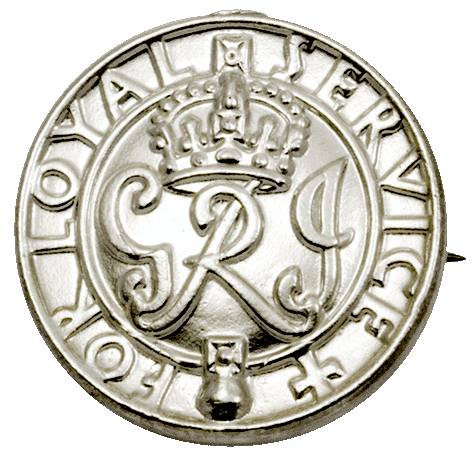
WW2 – King’s Badge. Similar to the above, and issued for the same reasons during World War 2. As well as members of the armed services, Merchant Navy and fishing fleet personnel qualified to wear the badge. By late 1944, wearing was extended Coastguards, the Police, members of Civil Defence and the National Military Reserve (Home Guard). Although each was issued with a certificate, unlike its World War I counterpart, the badge was not individually numbered or inscribed with a recipient’s identifying number or name.
UNOFFICIAL Badges – The photograph below depicts an unofficial badge. Its purpose is to mirror the official and authorised Australian or Fijian Infantry Combat Badges (ICB). The concept has been previously considered by NZDF authorities and rejected. This is a privately produced badge by a private ex-NZ infantry veteran’s organisation and only available for purchase by so-called ‘qualifying’ personnel. Wearing the badge is contrary to the articles in Section 46 of the Military Decorations and Distinctive Badges Act 1918 if the badge is worn in such a position as to imply legitimacy i.e., directly above official medals or ribbon bar.
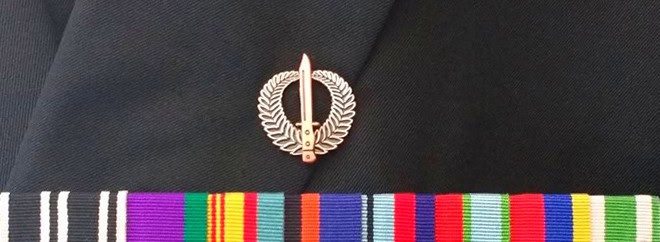
2. UNOFFICIAL Medals
“Unofficial” means any NZ or foreign order, decoration or medal (or badge) that does not have the approval of the Sovereign (Royal honours), NZ Governor-General (foreign honours) or Prime Minister (Commonwealth honours, where the Sovereign is NOT the head of state) to be accepted and worn by a New Zealand citizen.
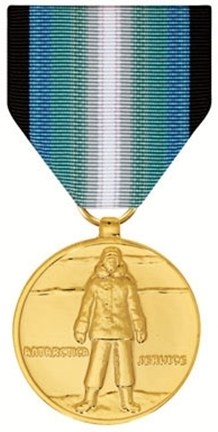
Example: United States Antarctic Service Medal. Awarded by the US Department of Defence to military and civilian personnel of all nations who have spent either a Summer Season (6 months) or Wintered Over (12 months) on the Antarctic continent. The medal has no official status in New Zealand, however it may be worn by persons no longer in the employ of the Crown, in accordance with the Rules of the DPMC (Honours Unit) for wearing non-approved medals from a foreign government where His Majesty the King is not the head of state.
DPMC Honours Unit Sep 2023: “In order for foreign honours to be mounted or worn alongside “official” insignia within the New Zealand Order of Wear, the acceptance and wearing of the foreign honour must be approved under New Zealand’s rules for foreign honours.
DPMC Honours Unit Sep 2023: Speaking generally, if a foreign honour is proposed for a New Zealand citizen, the Rules require it to be raised through official channels by the foreign government, and be approved for acceptance and wear by the Governor-General or Prime Minister as applicable. Once this approval has been given then that foreign honour can be accepted and worn.
DPMC Honours Unit Sep 2023: The US government has not formally requested the New Zealand government’s approval for the acceptance and wear of the United States Antarctic Service Medal (USASM) either for certain individuals or general acceptance.
DPMC Honours Unit, Sep 2023: The New Zealand government has on various occasions considered appropriate medallic recognition for Antarctic service. NZDF advice regarding historic and current service by New Zealand military personnel in the Antarctic region notes that this has not been categorised as operational service for the purposes of medallic recognition.
DPMC Honours Unit, Sep 2023: Instances of the USASM being presented to individual New Zealand citizens by US authorities have been made with no official application to the New Zealand government for acceptance and wear – as such, NZDF’s advice to their personnel has been that they can only be kept as mementos. Ex-Crown uniformed and non-uniformed employees who have been given a USASM should not wear the medal mounted with official awards as no approval for acceptance and wear of this foreign award has occurred for that individual, even if they have left service to the Crown.
DPMC Honours Unit, Sep 2023: DPMC Honours Unit has provided advice previously to the New Zealand Antarctic Society for its members that the USASM can only be worn on the right side only at events being held to commemorate Antarctic Service, and not mounted together or worn side-by-side with official medals in the Order of Wear.
“Unofficial” also refers to any medal that is produced by a non-governmental or commercial organisations, or produced privately by any citizen, that is presented as a gift/memento or sold for profit.
Unofficial medals are often commissioned by ex-military and private organisations to commemorate a particular event while others are mass produced as mementos for the purposes of commemorating an event such as, a battle, coronation, royal visit, disaster, anniversary etc. Whether produced for a legitimate commemorative purpose like a reunion, it must be remembered that these medals have no official status other than in the organisation they are produced for. Accordingly they should not be worn on an official uniform of a Crown employee.
Note 1: New Zealand Defence Service Medal (2011)
In 2011 the New Zealand Defence Service Medal (NZDSM) was instituted following a comprehensive study and recommendations made by an NZDF Medals Working Group whose aim was to review the adequacy of medallic recognition for NZ military service. The result was the institution of the NZ DSM which was designed to redress un-recognised periods of non-Active Service of up to 15 years. It is awarded to all regular and non-regular military personnel who complete 3 years of full time/efficient attested service in the NZDF.
Note 2: NZ Government’s Medallic Recognition Joint Working Group [MRJWG] (2009)
After lengthy debate resolved that service in Antarctica for military personnel was deemed to be non-operational service, i.e. it is conducted in a non-operational environment (no belligerent threat exists), as opposed to operational service conducted in an Area of Operations (AO) where a threat (or potential threat) exists from a belligerent or potentially belligerent group or nation). The MRJWG concluded that the NZ Defence Service Medal (NZDSM) was sufficient recognition to acknowledge Antarctic service, where the only threat is an environmental one. The NZDSM recognises all loyal, attested service by NZ military personnel, whether in New Zealand or overseas, and is the official recognition of service on land or air in Antarctica and Antarctic waters, and all other non-operational military service.
Wearing UNOFFICIAL medals
IAW the Rules set down by the DPMC Honour Unit, in summary the protocol for wearing unofficial medals is:
-
- Unofficial NZ or foreign medals should not to be worn on the same medal bar as official medals.
- Unofficial NZ or foreign medals are not to be worn at the same time as official medals are worn.
- Unofficial medals if worn are to be positioned on the RIGHT side of the chest.

Commemoration, including war commemoration medals
Reference: DPMC–Wearing Insignia https://www.dpmc.govt.nz/our-programmes/new-zealand-royal-honours/honours-lists-and-recipients/information-honours-recipients/wearing-insignia#publicandprivate
-
Medals Issued by Non-Governmental and Private Organisations
Awards issued by non-governmental and private organisations, other than those of the Order of St John and the Royal Humane Society of New Zealand, may not be worn, either with, below or on the right side, with official Orders, Decorations and Medals.
Rule of Thumb: If you had to pay for the medal, it is not be worn at any time that you are wearing OFFICIAL medals.
Examples of UNOFFICIAL commemorative (including war) medals produced by non-governmental and private organisations:
* 1995 – Wellington Army Assn: 150th Anniversary of NZ Army Commemorative Medal. Produced by the Wellington Army Association in 1995 to commemorate 150 years since the formation of a permanent military force in New Zealand in 1845. It was presented officially to ONLY ONE group of Veteran’s descendants – the families of the 1st NZ Contingent NZMR who served in the Anglo-Boer War, 1899-1902. The medal is now manufactured widely by commercial enterprises.
This commemorative medal should not be worn, either with, below or on the right side, with official Orders, Decorations and Medals.
** 1998 – Regular Force Cadet School: 50th Anniversary Commemorative & Memorial Medal. Produced by the Regular Force Cadet Association (NZ Army) in 1998 to commemorate the 50th anniversary of the formation of the RF Cadet School at Trentham in 1948. Ex-RF Cadet and Infantry Brigadier (Rtd) Bret Bestic RNZIR made a special presentation of eight of the 1000 medals manufactured, to the families of the eight Fallen Cadets who died on Active Service. The eight medals are deemed to be ‘official’ only for the eight families meaning they are permitted to wear the medal at any subsequently hosted ex-RFCS event where wearing medals is appropriate. The remaining medals were purchased by ex-cadets attending the 50th anniversary commemorative celebrations.
This commemorative medal is not be worn, either with, below or on the right side, with official Orders, Decorations and Medals.
*** 2001 Voluntary Service Medal: International Year Of the Volunteer (IYOV). A United Nations initiative to celebrate the International Year of Volunteers. The medal is an unofficial commemorative medal/medallion that volunteer organizations worldwide could issue to recognise the commitment of their volunteer staff. In NZ, members of volunteer organisations such as Fire services (e.g. NZ Fire & Emergency, NZ Rural Fire Service), Ambulance and Police received the VSM in either a medal configuration or as a cased medallion (NZ Police). Some uniformed service organisations have specified rules that permit the wearing of this medal when in uniform, but otherwise, the same rules apply for wearing the VSM as those for unofficial commemorative medals.
The 2001 IYOV VSM commemorative medal is not be worn, either with, below or on the right side, with official Orders, Decorations and Medals except where organisational regulations specify, e.g. NZ Fire & Emergency.
-
Commercially produced medals (aka VANITY – JUNK – TIN)
The derogatory names of VANITY, JUNK or TIN are applied to medals and badges produced commercially or privately that are designed to represent or commemorate military or civil service where no official medal has been struck or was warranted. The line between military and civil commemoration is also blurred. Irrespective, these medals are produced for profit, mainly retailed on-line and tend to be worn predominantly by military Wannabes, and Imposters posing as returned veterans.
Vanity medals have been worn by former uniformed service members (military, police, customs etc) who have not met the requirements for an official medal, or who may have been prematurely released for medical, disciplinary or unsuitability reasons.
Vanity medals have no official status whatsoever and are not to be worn, either with, below or on the right side, with official Orders, Decorations and Medals. Commercially produced medals or those produced by private organisations when worn at other times, are to be positioned on the RIGHT side of the chest.
Examples of commercially produced commemorative medals that fall into this category:
How many is too many?…. LESS is more !
Rule of Thumb: Avoid the ‘Christmas Tree’ look by not wearing too many badges or medals; to do so makes you look ridiculous, is unprofessional, and screams WANNABE !
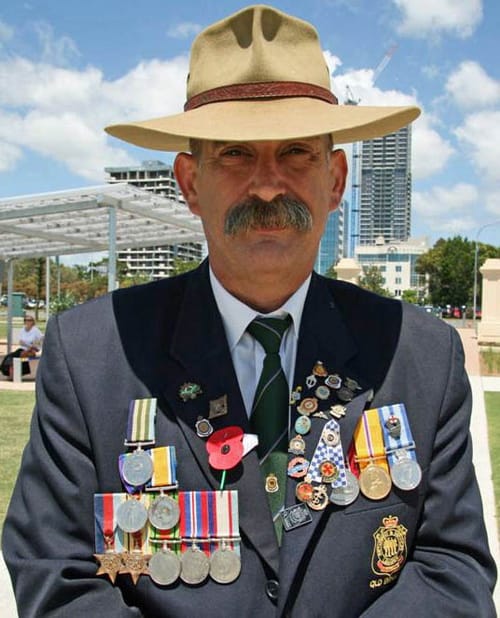
4. Wearing emblems with medals
Poppies. When wearing medals it is appropriate to wear your Poppy immediately above medals (or brevet if worn), or on the LEFT lapel/chest (personal choice). When wearing the medals of a relative on the right side, the Poppy remains on the LEFT side.
When attending a commemorative occasion or funeral at which Poppies are to be laid as personal tributes, it is appropriate that the Poppy you wear is the one you use to pay tribute. Positioning your Poppy on the left (lapel or above medals) permits ease of access to remove it at the appropriate time to place on a cenotaph, memorial, coffin or in the grave.

5. Compliments when wearing medals
Traditional Salute. Veterans attending parades, commemorative events, wreath laying services or funerals who are wearing civilian dress, with or without medals or an item of military head dress (e.g. beret, ski cap, ‘Lemon Squeezer’ etc) who wish to pay a saluting compliment, do not salute with the hand on any occasion. To do so (usually badly) is entirely inappropriate, is incorrect protocol, screams ignorance, and looks ridiculous!
Hand salutes are performed only by uniformed personnel of the NZDF or those in a uniformed service of the Crown, who are wearing full uniform inclusive of head dress. An ex-service person wearing civilian clothing and military head dress does not constitute ‘full uniform’. To get around this issue the Veterans Salute was developed as a versatile and appropriate way of paying a formal compliment when not in uniform.
Veteran Salute
Background – the Veteran Salute originated in London on Armistice Day 1920 during the ceremony to unveil and dedicate the national Cenotaph in Whitehall. At the same time a funeral procession accompanying the remains of the Unknown Soldier halted at the Cenotaph during the ceremony before proceeding to Westminster Abbey for internment. Those present included the senior Sailor, Soldier and many Victoria Cross recipients. The ceremony concluded with a march past. The Regimental Sergeant Major of the Guards Regiment conducting the ceremony, faced with a gathering of highly decorated and high ranking men (including VC holders), all of whom were wearing rows of medals, decreed that all personnel would salute the Cenotaph as they marched past by placing their right hand over their medals, signifying that ‘no matter what honours we may have been awarded, they are nothing compared with the honour due to those who made the supreme sacrifice’.
This method of paying a compliment provides a versatile and practical method for Veterans in civilian dress to pay a compliment on any occasion when saluting is appropriate. The Veteran Salute can be performed without error or effort, with or without medals, with or without head-dress, individually (e.g. at a funeral or wreath laying) or, on command when a member of a marching group.
The Veteran Salute is not prescribed in any NZ document of protocol however it has proved its purposefulness internationally on ceremonial occasions attended by military Veterans in civilian dress. It actively discourages those who would ignore protocol and hand salute, can be performed individually to suit a circumstance, or on command when in a marching formation. The Veteran Salute can also be performed at any time non-uniformed Veterans and uniformed personnel are required to salute together (together with armed military personnel) without any detriment to the performance of the compliment.
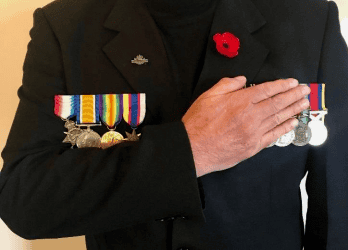
When should a Veteran salute?
- Individuals when stationary – the normal procedure is, after bowing the head briefly (when appropriate), cover your medals on the left chest with the right hand, fingers extended and closed together. This same gesture of respect may be made if no medals are worn. Persons, whether or not a Veteran, wearing a deceased Veteran’s medals (on the right chest), do not cover the medals with their left hand but rather salute by placing their right hand over their heart (in the manner of the Veteran Salute) as an appropriate alternative.
- When on the march – for Veterans marching as a formed body (under command) when a compliment is required, the Veterans Salute is executed during a March Past (on the command Eyes Left/Right & Front), during the sounding of the LAST POST, playing of a Royal or General Salute, or National Anthem (any country).
- At funerals – it is appropriate to salute before and after a Poppy is placed on the coffin, when the coffin passes between an honour guard of attending Veterans, and when a Poppy (or soil) is thrown into a grave. It is also appropriate when the ODE is recited and the LAST POST is sounded. No salute is required when the ROUSE is sounded (‘Reveille’ as it is incorrectly referred to).
- Whether a coffin is inside a church, another indoor venue, protruding from a stationary hearse, or otherwise outside, whether sitting on bearers above the grave, or lowered into it, the method for Veterans to pay a personal compliment is the same… Approach the coffin or grave at the FOOT end, stand to attention, acknowledge the deceased by simultaneously bowing your head and performing the Veterans Salute, lay your Poppy on the casket or as otherwise requested; if at the graveside lay your Poppy on the casket when invited, or drop into the grave if after the coffin has been lowered – as appropriate. Note: it is NOT appropriate to touch the coffin, e.g. place your hands on it – this is the domain of family only.
- Before leaving the coffin or departing the graveside – approach the FOOT end and repeat head bow and Veterans Salute to conclude your compliments to the deceased.
6. Medal guidance for families
WHO is allowed to wear family medals ?
Wearing a family member’s medals is an HONOUR. Medals are the taonga* of a family’s military heritage that link ancestor Veterans to their descendants of the present. Wearing their medals is a visible reminder of that Veteran and an acknowledgement they are not forgotten. Not only are you acknowledging their military service (in war or other) but you also honour their memory and the sacrifices they made in the service of the State.
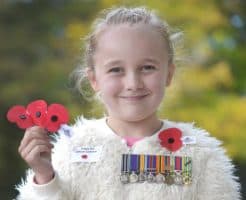
Any family member may wear the medals of any other deceased member of their family. If a family Veteran is living, ONLY he or she can wear their full size or miniature medals. Duplicate sets of the living Veteran’s medals are not permitted to be worn by any other person (including miniature medals and ribbon bars).
* Taonga = a Maori term meaning a treasure, highly prized possession.
Note: It might look cute or be a fun idea to have children wear the genuine or Replica medals of a living veteran but apart from devaluing the status of an honour/award which other Veterans have legitimately earned in service of the State, children wearing medals also disrespects their approving authority (Sovereign, Governor General or Prime Minister). Medals are not designed to be children’s play-things or dress-up decorations – accord them the respect they represent.
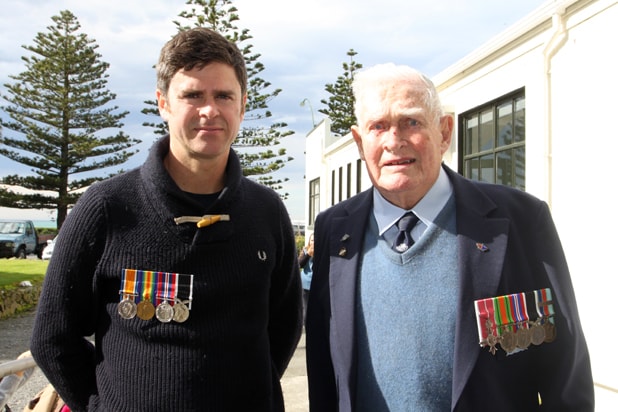
Tom Brodie with his grandfather, former RNZAF pilot Squadron Leader Paul A. Brodie (GD and A&S-GST) seen here on Anzac Day, 2014 at Kaikoura. Tom is wearing the First and Second World War medals of his great-grandfather (Paul’s father) correctly. Photo credit : Kaikoura Star
WHAT medals am I allowed to wear ?
- Only official service decorations and medals (full-size or miniature) of the deceased family member that are mounted on a medal bar – neck badges, sashes, sash badges, or breast stars are not permitted to be worn.
- Only official medals which are suspended from a medal bar may be worn and specified in the NZ Order of Wear.
- The WW1 Silver War Badge (SWB – sometimes incorrectly referred to as a Wound, Discharge or Services Rendered/Loyalty badge), WW1 Returned Soldiers Badge (large), or the WW2 King’s Badge may be worn centrally below a deceased veteran’s medals.
- If wearing miniature medals, some latitude is permitted to wear more than one group when appropriate, e. g. your own full-size medals plus grandfather and father’s miniature medals.
- If more than one group of miniature medals is to be worn, e. g. WW1 and WW2, the earliest awarded medals (WW1) take precedence and are to be placed on the right chest in the same relative position as for medals worn on the left. If both miniature groups can fit comfortably side by side, the senior group is placed closest to the centre of the chest. If space is an issue, the senior group (WW1) is placed above any second or subsequent groups, e. g. WW2 and post WW2 era medals.
Full-size or Miniature?
Veterans awarded a significant number of medals may sometimes be seen wearing miniature medals during daylight hours on commemorative occasions, in lieu of their full-size medals. This is perfectly acceptable to if the weight of wearing the full-size medals is likely to hinder the Veteran in the performance of any official duties, or the weight of full-size medals proves too cumbersome for the elderly or infirm Veterans to manage – this is a personal choice.
WHAT medals am I NOT allowed to wear ?
- NO PERSON is permitted to wear any official medal which has not been awarded to them (with the exception of a deceased relatives medals, as described above). To do so is an offence contrary to Section 46 of the Military Decorations and Distinctive Badges Act 1918 from which criminal proceedings can be initiated.
- NO PERSON is permitted to wear the insignia of any Royal Honour or State award such as a neck decoration, badge, sash, sash badge or breast star, other than the recipient (even if the recipient is deceased).
- NO PERSON is permitted to wear the medals of a living Veteran (includes children wearing miniature medals).
- NO PERSON is permitted to wear official medals for ‘fancy dress’ or as a theatrical adornment.
- Not more than one group of full-size medals should be worn on the Right chest.
- UNOFFICIAL medals (self-purchased ‘vanity/junk’) are not permitted to be worn with (on the same medal bar), beneath, on the Right side, or at the same time as official medals are worn
- Although not medals or honours per se, a relative of a deceased person may not wear any official badge such as a naval or aircrew brevet, military personal commendation or unit citation.
WHEN can I wear my relatives medals ?
A family descendant may only wear a deceased relatives medals. They may be worn on the two national days of Remembrance which are, Anzac Day (25 April) and Armistice Day (11 November). The medals should be worn only for the duration of the ceremony/service and be removed immediately the official part of the occasion is complete.
Note: Veterans wearing medals are guided by the occasion when consideration is given to the duration medals are worn.
The following is a guide for wearing Full-size and Miniature medals:
-
Daylight hours – Full-size medals are normally worn during daylight hours, defined as the hours between sunrise and sunset (approximately 6 am to 6 pm).
-
Evening hours – Miniature medals are designed for evening wear, on uniform or evening attire when the wearing of medals is required. Evening is defined as the hours between sunset and sunrise (approximately 6 pm to 6 am).
Note: Official medals must not be worn with fancy dress or as a decorative adornment. To do so undermines the status of the honours and awards Veterans have legitimately earned, whilst also disrespecting their approving Authority (the Sovereign, Governor General or Prime Minister).
WHERE are medals worn ?
-
Observing correct medal and poppy wearing protocol … Holly Moore (12), of Queenstown wore her great-grandfather’s WW1 medals when she walked in the Queenstown Anzac Day parade alongside her grandfather Pat Moore from Auckland. Photo by Henrietta Kjaer – ODT.
The honour of wearing official medals on the LEFT chest is the sole prerogative of the medal recipient and does not pass to a widow, parent, child or other relative after that recipient dies. The same rule applies in the case of posthumous (after death) awards. -
British lifesaving medals were available to New Zealanders until 1998 when a new range of New Zealand Bravery awards was instituted to recognise both military and civilian personnel who performed acts of self sacrifice and life saving. The only official honours from non-governmental or private organisations which have been authorised by the Sovereign (Royal patronage) for acceptance and wear by NZ citizens are the Order of St John and Royal Humane Society honours. Official non-governmental or private organisation honours are worn on the RIGHT chest – with one exception.
-
The Order of St John – King Charles III as Sovereign Head of the Order has authorised those classes of the Order worn on a medal bar, to be worn ahead of all other official medals on the LEFT chest.
- Why the LEFT chest for Recipients? – contrary to popular belief the origin of wearing medals on the left chest has nothing to do with wearing them over the heart, as many seem to think. It stems from a very practical historical reason which has been adopted as the standard practice to the present day. When swords were worn they were worn predominantly positioned on the left side as most officers were right-handed and could draw their sword without interference. The swords were also heavy so a sash or belt was worn over the right shoulder to help support the weight, either with or without a belt. This would mean that if medals were worn on the right chest they would be covered by the sash or belt, could be knocked off by same or when drawing the sword.
-
Why the RIGHT chest for family members? – quite simply to clearly distinguish between medal recipients and those wearing the medals of a deceased relative.
HOW are medals worn ?
- Official medals are attached to a medal brooch bar, or may be stitched directly onto the jacket/outer garment.
- Medals are worn in a single row on a medal brooch bar (overlapped as necessary depending on the number of awards).
- Medals are worn in a specified sequence on the medal bar IAW the DPMC Rules – refer NZ ‘Order of Wear’ below
- Medals are normally mounted in either the SWING/FREE Style or COURT Style – see Medal Mounting.
- The medal brooch bar is positioned central and horizontally on the left chest (or right for family members) immediately above a real or imaginary chest pocket, the brooch bar pin being located immediately above the top edge of the pocket flap.
- When medals are worn on a coat the medal brooch bar is fixed in the same relative position – the coat should be worn buttoned up.
WHY wear a deceased relative’s medals ?
The desire of families to honour and remember their family’s military veterans is evident by the ever increasing numbers, particularly of children, who proudly wear their ancestor’s medals on Anzac Day and Armistice (Remembrance) Day. Regrettably the disposal or loss of these medals has been all too frequent since over the intervening decades which effectively has denied many families a precious part of their ancestral military heritage.
Both the New Zealand and Australian governments have frequently acknowledged and honoured the selfless service of our military Veterans, past and present. As their descendants, we should never forget the voluntary spirit which motivated them to answer their King’s “call to arms” to serve in the South African War (2nd Anglo-Boer), the First and Second World Wars. Queen Elizabeth II subsequently required theirs, and our present veteran community, to serve in the Korean War, SE Asian conflicts (Malaya, Borneo, Vietnam) as well as the numerous United Nations, Peacekeeping and Special Service missions since. In fulfilling these obligations we should also never forget the affect their departure from NZ had upon often fearful and struggling families left behind, many of whom would never set eyes upon their loved ones again.
The selfless service of our war and service Veterans, past and present, in their pursuit of preserving that which we hold dear to our way of life in New Zealand, is worthy of our eternal gratitude. You can acknowledge and honour your deceased Veterans’ service and sacrifice by wearing their medals with dignity and pride on our two national days of remembrance.
But most importantly …
.. wear their medals with Dignity and Pride
~~~~~~~~~~~~~~~~~~~~~~~~~~~~
7. NZ Royal Honours System
The New Zealand Royal Honours system is a uniquely New Zealand system, administered by the Honours Unit, an office within the Department of the Prime Minister and Cabinet. The final honours lists are approved by The King of New Zealand, hereinafter referred to as the “Sovereign”, on the advice of the Prime Minister.
The New Zealand Royal Honours system is made up of:
- The Order of New Zealand
- The New Zealand Order of Merit
- The Queen’s Service Order and associated Queen’s Service Medal
- The New Zealand Bravery and Gallantry Stars
- The New Zealand Distinguished Service Decoration
- The New Zealand Antarctic Medal
Over the years there have also been some special or one-off awards, such as the New Zealand 1990 Commemoration Medal, and the New Zealand Suffrage Medal 1993.
As well as these core elements, the armed and uniformed services also have medals for their personnel, which are administered by those agencies.
For a complete list of all the orders, decorations and medals that are officially part of the New Zealand Royal Honours system, see the honours listed in the New Zealand Order of Wear
Rules relating to the acceptance and wearing of Commonwealth, Foreign and International Honours
The Authority for approving NZ Honours and awards is the King of New Zealand. His Majesty, the King has:
- delegated his Authority to the Governor-General of New Zealand, on the advice of the Prime Minister, to approve the acceptance and wearing of any Foreign honour by a New Zealand citizen;
- delegated his Authority to the Prime Minister of New Zealand to approve the acceptance and wearing of any Commonwealth honour by a New Zealand citizen;
- delegated his authority to the Governor-General of New Zealand, on the advice of the Prime Minister, to amend these Rules from time to time, with the exception of Rule 2 (a) to (c) above.
Rules and the DPMC Honours Unit
The Rules that govern the acceptance and wearing of NZ and foreign orders, decorations and medals in New Zealand are administered by the Honours Unit, an office of the Department of the Prime Minister and Cabinet (DPMC). The primary work of the Honours Unit is managing all matters related to King’s Birthday and New Year Honours lists, Gallantry and Bravery honours lists from time to time, and investitures.
The Honours Unit also has an advisory responsibility to the Prime Minister, in consultation with the NZ Herald of Arms for all honours designed by the Herald, and with the Heads of organisations employed by the Crown, e.g. the armed forces (NZDF) and non-military uniformed services (NZ Police, Customs etc).
The Honours Unit administers and promulgates the rules, hereafter called the Rules (including amendments), approved by the Approving Authority of any NZ or foreign order, decoration or medal worn by a New Zealand citizen.
8. New Zealand – Order of Wear
State Orders such as the Order of New Zealand, are worn as a badge suspended around the neck by a ribbon. These may be accompanied by a Breast Star and a Cordon/Sash. Some Orders and all Decorations and Medals are worn suspended from a single medal brooch bar, in an approved sequence known as the Order of Wear. Those awards that attract post-nominal letters the recipient is entitled to use after their name, are shown below after the award.
Order of Wear – NZ Special & Imperial medals (as at Jan 2019)
VC, NZC & GC (with entitled post-nominal letters)
- The Victoria Cross and Victoria Cross for New Zealand – VC
- New Zealand Cross (1999) – NZC
- George Cross – GC
State Orders (with entitled post-nominal letters)
- Knight/Lady of the Garter – KG/LG
- Knight/Lady of the Thistle – KT/LT
- Knight/Dame Grand Cross of the Order of the Bath – GCB
- Order of Merit – OM
- Order of New Zealand – ONZ
- Baronet/Baronetess‘s badge (Bt., Bart. or Btss.)
- Knight/Dame Grand Companion of the New Zealand Order of Merit – GNZM (formerly Principal Companion of the New Zealand Order of Merit – PCNZM)
- Knight/Dame Grand Cross of the Order of St Michael and St George – GCMG
- Knight/Dame Grand Cross of the Royal Victorian Order – GCVO
- Knight/Dame Grand Cross of the Order of the British Empire – GBE
- Companion of Honour – CH
- Knight/Dame Companion of the New Zealand Order of Merit – KNZM/DNZM (formerly Distinguished Companion of the New Zealand Order of Merit – DCNZM)
- Knight/Dame Commander of the Order of the Bath – KCB/DCB
- Knight/Dame Commander of the Order of St Michael and St George – KCMG/DCMG
- Knight/Dame Commander of the Royal Victorian Order – KCVO/DCVO
- Knight/Dame Commander of the Order of the British Empire – KBE/DBE
- Knight Bachelor Confers the title of Sir with no post-nominals
- Companion of The New Zealand Order of Merit – CNZM
- Companion of the Order of the Bath – CB
- Companion of the Order of St Michael and St George – CMG
- Commander of the Royal Victorian Order – CVO
- Commander of the Order of the British Empire – CBE
- New Zealand Gallantry Star – NZGS
- New Zealand Bravery Star – NZBS
- Companion of the Distinguished Service Order – DSO
- Lieutenant of the Royal Victorian Order – LVO
- Companion of The Queen’s Service Order – QSO
- Officer of The New Zealand Order of Merit – ONZM
- Officer of the Order of the British Empire – OBE
- Companion of the Imperial Service Order – ISO
- Member of the Royal Victorian Order – MVO
- Member of The New Zealand Order of Merit – MNZM
- Member of the Order of the British Empire – MBE
Decorations
- New Zealand Gallantry Decoration – NZGD
- New Zealand Bravery Decoration – NZBD
- Royal Red Cross 1st Class (Member) – RRC
- Distinguished Service Cross – DSC
- Military Cross – MC
- Distinguished Flying Cross – DFC
- Air Force Cross – AFC
- Royal Red Cross 2nd Class (Associate) – ARRC
- Order of St John
The Order of St John is a semi-independent Order of Chivalry and while it is outside ministerial authority it remains within the New Zealand system. All appointments to, and promotions in, the Order are sanctioned by The Queen as “Sovereign Head” of the Order. In New Zealand the Order is constituted as a Priory and the Governor-General is Prior (head).
>> Grade I – Bailiff or Dame Grand Cross – GCStJ
>> Grade II – Knight or Dame of Justice or Grace – KStJ or DStJ
>> Grade III – Chaplain – ChStJ
>> Grade III – Commander – CStJ
>> Grade IV – Officer – OStJ
>> Grade V – Member – MStJ
>> Grade VI – Esquire – EsqStJ
Medals for Gallantry and Bravery
- Distinguished Conduct Medal – DCM
- Conspicuous Gallantry Medal – CGM
- George Medal – GM
- Distinguished Service Medal – DSM (Imperial)
- Military Medal – MM
- Distinguished Flying Medal – DFM
- Air Force Medal – AFM
- Queen’s Gallantry Medal – QGM
- New Zealand Gallantry Medal – NZGM
- New Zealand Bravery Medal – NZBM
Medals for Meritorious Service
- Royal Victorian Medal (Gold, Silver, Bronze) – RVM
- Queen’s Service Medal – QSM
- New Zealand Antarctic Medal – NZAM
- New Zealand Distinguished Service Decoration – DSD
- British Empire Medal – BEM
- Queen’s Police Medal for Distinguished Service – QPM
- Queen’s Fire Service Medal for Distinguished Service – QFSM
Campaign Medals
Victorian Campaigns (NZ Land Wars)
South African War – 1899-1902 (Anglo-Boer or Boer War)
- Queen’s South Africa Medal – 12 clasps for eligible New Zealand soldiers. Nurses did not receive clasps.
- King’s South Africa Medal – 2 clasps for every medal awarded
World War I – 1914-1920
- 1914 Star (“Mons” Star) with Clasp: 5TH AUG–22 NO 1914
- 1914-15 Star
- British War Medal
- Mercantile Marine War Medal
- Victory Medal (emblem of the award of a Mention in Dispatches worn on this ribbon)
- Memorial Plaque – issued from the commencement of World War 1, to the next of kin of New Zealand servicemen and women who were killed while serving overseas, or who died of wounds received while serving overseas, during the First World War. The plaque (sometimes referred to as a ‘Death Penny, Death Plaque, Widow’s Penny’) was also issued to the next of kin to servicemen and women, including those who served in the Mercantile Marine (Merchant Navy) after the end of the war, for those who died later as a result of their war service, the cut-off for these claims being three years from the date the war officially ceased.
- Memorial Scroll – A Memorial Scroll produced in the UK that accompanied each Memorial Plaque. The scroll was 20 x 32 cms in size and had the number, rank, name and unit of the deceased person penned in calligraphy with red ink. It was intended to be framed.
World War II – service to 03 Sep 1945 (includes UN, NATO & European Union awards – worn in order of date of participation)
- 1939-1945 Star – with clasps BATTLE OF BRITAIN (10 Jul-31 Oct 1940 only) and BOMBER COMMAND
- Atlantic Star – with clasps AIRCREW EUROPE and FRANCE & GERMANY (only the first clasp earned is worn)
- Air Crew Europe Star – with clasps ATLANTIC and FRANCE & GERMANY if qualified (only the first clasp earned is worn)
- Arctic Star
- Africa Star – with clasps 1ST ARMY, 8TH ARMY, NORTH AFRICA 1942-43 (only one worn)
- Pacific Star – clasp BURMA if later qualified for Burma Star
- Burma Star – clasp PACIFIC if later qualified for Pacific Star
- Italy Star – no clasps
- France and Germany Star – with clasp ATLANTIC if qualified (no Aircrew Europe clasp for this star)
- Defence Medal
- War Medal 1939–1945 (emblem of the award of a Mention in Dispatches worn on this ribbon)
- New Zealand War Service Medal
- New Zealand Memorial Cross (King George VI) – awarded since the commencement of World War 2 to the next of kin of New Zealand service personnel who died overseas while on “active service”, or subsequently died from causes attributable to that service. The award was suspended from a purple neck ribbon. Since 1960 the New Zealand Memorial Cross (Queen Elizabeth II) has been award as a brooch design.
Post World War II – service from 03 Sep 1945 (includes UN, NATO & European Union awards – worn in order of date of participation)
- New Zealand Operational Service Medal – awarded for first overseas deployment only
- New Zealand Service Medal 1946 – 1949 (British Commonwealth Occupation Forces [BCOF] in Japan (“J-Force”)
- Korea Medal (“K-Force”)
- Naval General Service Medal (1915)
- General Service Medal 1918–62 with clasp MALAYA
- New Zealand General Service Medal 1992 (Non-Warlike) with clasp KOREA 1954-57
- New Zealand General Service Medal 1992 (Warlike) with clasp MALAYA 1960-64
- General Service Medal 1962 with clasps BORNEO and MALAY PENINSULA
- Vietnam Medal (“V-Force”)
- New Zealand General Service Medal 1992 (Warlike) with clasp VIETNAM
- Rhodesia Medal
- New Zealand General Service Medal 1992 (Non-Warlike) with clasp INDIAN OCEAN
- New Zealand General Service Medal 1992 (Non-Warlike) with clasp SINAI
- New Zealand General Service Medal 1992 (Warlike) with clasp KUWAIT
- New Zealand General Service Medal 1992 (Non-Warlike) with clasp SOMALIA
- New Zealand General Service Medal 1992 (Non-Warlike) with clasp RAWANDA
- North Atlantic Treaty Organisation Medal (NATO) for the Former Yugoslavia
- East Timor Medal
- NZGSM 2002 (Solomon Islands)
- NZGSM 2002 (Korea)
- NZGSM 2002 (Afghanistan) – Primary Operations Area
- NZGSM 2002 (Afghanistan) – Secondary Operations Area
- North Atlantic Treaty Organisation Medal (NATO) for Kosovo
- North Atlantic Treaty Organisation Medal (NATO) for Non-Article 5 Operations in the Balkans
- NZGSM 2002 (Iraq 2003)
- The North Atlantic Treaty Organisation Medal (NATO) for the Non-Article 5 ISAF Operation in Afghanistan – up to 31 December 2014
- European Security and Defence Policy (ESDP) Service Medal
- NZGSM 2002 (Timor-Leste)
- NZGSM 2002 (Counter-Piracy)
- North Atlantic Treaty Organisation (NATO) Medal for Africa
- NZGSM 2002 (Iraq 2015)
- NZGSM 2002 (Greater Middle East)
- North Atlantic Treaty Organisation Medal (NATO) Medal for Afghanistan – NATO Operation Resolute Support – from 1 January 2015
United Nations Medals
Service by military personnel and by civilian Police personnel in United Nations peace-keeping missions throughout the world since 1948 is recognised by the award of a medal bearing the United Nations emblem.
United Nations medallic policy is that other civilians are not awarded United Nations awards, with the exception of:
- The United Nations Medal (Korea) was also awarded to a limited range of civilians whose organisations were certified by the United Nations Commander-in-Chief as having directly supported military operations in Korea between 1950 and 1954 (emblem of an award of a Mention in Dispatches worn on this ribbon).
- The Dag Hammarskjöld Medal is awarded to military personnel, civilian Police personnel and other civilians who lose their lives while in the service of the United Nations. The medal is not designed to be worn.
UN Mission Medals
- To date, there have been more than 60 individual UN missions established each one recognised by the award of the United Nations Medal. Many New Zealand military and civilian Police personnel have taken part in UN missions all over the world. As a consequence the UN medal with a great variety of different mission ribbons is commonly worn in this country. View the ribbons of missions New Zealand has participated in here.
- The United Nations Special Service Medal (UNSSM) was created in 1995 to recognise United Nations service of at least 90 days duration by military personnel and civilian police for which no other award is authorised
New Zealand Special Service, Polar & Imperial Service Medals
- New Zealand Special Service Medal (Nuclear Testing)
- New Zealand Special Service Medal (Erebus)
- New Zealand Special Service Medal (Asian Tsunami)
- Polar Medal (in order of date of award.)
- Imperial Service Medal
Jubilee, Coronation and New Zealand Commemoration Medals
- King George V Coronation Medal, 1911
- George V Silver Jubilee Medal, 1935
- King George VI Coronation Medal, 1937
- Queen Elizabeth II Coronation Medal, 1953
- Queen Elizabeth II Silver Jubilee Medal, 1977
- Queen Elizabeth II Golden Jubilee Medal, 2002 (only for personnel who were awarded the medal while a member of the British forces)
- Queen Elizabeth II Diamond Jubilee Medal, 2012
- New Zealand 1990 Commemoration Medal
- New Zealand Suffrage Centennial Medal 1993
Merit, Efficiency and Long Service Awards
- New Zealand Meritorious Service Medal (formerly the Medal for Meritorious Service awarded only to members of the New Zealand Army)
- New Zealand Defence Meritorious Service Medal
- New Zealand Police Meritorious Service Medal
- New Zealand Public Service Medal – inst Nov 2018
- New Zealand Armed Forces Award
- New Zealand Army Long Service and Good Conduct Medal (formerly the Long Service and Good Conduct Medal, Military)
- Royal New Zealand Navy Long Service and Good Conduct Medal
- Royal New Zealand Air Force Long Service and Good Conduct Medal
- New Zealand Police Long Service and Good Conduct Medal
- New Zealand Fire Brigades Long Service and Good Conduct Medal
- New Zealand Prison Service Medal
- New Zealand Traffic Service Medal
- New Zealand Customs Service Medal
- Efficiency Decoration – ED
- Efficiency Medal
- Royal New Zealand Naval Reserve Decoration – RD
- Royal New Zealand Naval Volunteer Reserve Decoration – VRD
- Royal New Zealand Naval Volunteer Reserve Long Service and Good Conduct Medal
- Air Efficiency Medal – AE (post-nominal used only when awarded to an officer)
- Queen’s Medal For champion shots of the New Zealand Naval Forces
- Queen’s Medal For champion shots of the Military Forces
- Queen’s Medal For champion shots of the Air Force
- NZ Cadet Forces Medal
NZ Defence Service Medal
- New Zealand Defence Service Medal (with Clasps: Regular, Territorial, National Service, CMT)
Commonwealth & Foreign Medals (official)
DPMC Honours Unit Sep 2023: No approval is required for the acceptance and wearing of official medals issued by a Commonwealth or foreign country, or international organisation, to commemorate previous military or operational service approved by government, including peacekeeping operations, by former New Zealand military and other personnel.
DPMC Honours Unit Sep 2023: No approval is required to continue to wear a (official) Commonwealth or foreign honour received by a person before they became a New Zealand citizen.
Note: The above is distinct from non-approved (unofficial) commemorative medals produced by organisations for the purposes of profit.
Australian Defence Medal
- Australian Defence Medal (former members of the ADF)
Commonwealth Independence Medals
Miscellaneous Medals
Commonwealth Countries – Orders, Decorations and Medals
Instituted by the Sovereign as Head of State, other than in right of New Zealand or the United Kingdom. At the discretion of the holder, a Commonwealth award may be worn in a position comparable to, but following, the equivalent New Zealand or British Order, Decoration or Medal. Worn in order of date of award.
Orders
- Royal Military Order of St George (Tonga)
Decorations (nil)
Medals
- INTERFET (International Force East Timor) Medal
- Pingat Jasa Malaysia (PJM) Medal – instituted by Commonwealth countries of which the Sovereign is not Head of State.
- Tongan Coronation Medal (2008)
Foreign Awards
Worn in order of date of award, according to participation or approval by foreign government.
Foreign Orders
Foreign Decorations
- United States Bronze Star Medal
- United States Army Achievement Medal
- United States Antarctica Service Medal
- NATO Meritorious Service Medal
Official Foreign Medals
- Korean War Service Medal
- South Vietnamese Campaign Medal
- Zimbabwe Independence Medal (approved for restricted wear only**)
- Kuwait Liberation Medal (approved for restricted wear only**)
- Multinational Force and Observers Medal
- Timor Leste Solidarity Medal
- United States Army Commendation Medal
Note: ** Restricted Wear. The level of approval granted by the Sovereign which allows for an award to be worn only on specified occasions. Most of the awards which are approved for restricted wear are foreign awards. Where restricted permission has been given the insignia may be worn on the following occasions:
- in the presence of any member of the Royal Family or Head of State of the country concerned;
- at the residence of any ambassador, minister, or consular officer of that country in New Zealand or abroad, but not if meeting him or her elsewhere;
- when attached to or officially meeting any officer of the Armed Forces or official deputation of that country;
- at any official or semi-official ceremony held exclusively in connection with that country, and
- on all occasions whilst in that country.
Foreign Commendations and Citations
Persons awarded a foreign official Commendation or Citation must obtain approval from the Governor General or Delegate, to accept and wear any military unit citation or personal commendation. The process for New Zealand citizens is the same as that for Commonwealth and foreign honours.
References:
- https://www.dpmc.govt.nz/our-programmes/new-zealand-royal-honours/new-zealand-royal-honours-system/rules-relating-to-acceptance-and-wearing
- https://www.dpmc.govt.nz/our-programmes/new-zealand-royal-honours/honours-lists-and-recipients/information-honours-recipients/order-of-wear-orders-decorations-medals-in-new-zealand
~~~~~~~~~~~~~~~~~~~~~~~
9. Medal Fraudsters & Military Impostors
Valour Thief, Medal Cheat, Impostor & Wannabee
1. VALOUR THIEF
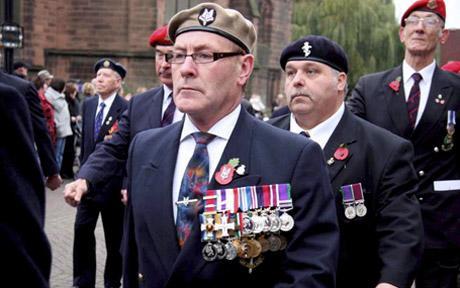
The lowest of the low is the Valour Thief. These are persons who steal valour by fraudulently representing him/herself as a self-styled hero by wearing official or replica decorations, medals or badges reserved for those who have performed acts of gallantry, bravery, distinguished or meritorious service. Anyone who wears a decoration or medal designed to recognise such acts who has no entitlement, is breaking the law and can be prosecuted under the Summary Offences Act 1981 and/or if in contravention of Section 46 of the Military Decorations and Distinctive Badges Act 1918.
2. MEDAL CHEAT (‘Poser’)
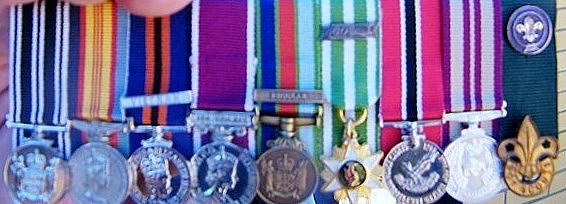
The Medal Cheat in military parlance is also termed a ‘Poser’, a show-off who wears any unofficial medal, or non-entitled military badge of merit or qualification (or both) to impress, these normally appear on public commemorative occasions whenever medals are to be worn.
Medal Cheats regrettably are more frequently among the ranks of the ex-military veteran community. These people know exactly what they are doing by disregarding accepted practice and protocol drawn from the DPMC Rules. However the temptation to add unofficial vanity / junk / tin medal(s) to their rack (incl wearing official qualification badges they have no entitlement to), in order to inflate their own ego by feigning an entitlement is often the motivation coupled with their perception of medal inadequacy as a veteran when compared to some of their more medaled mates and former colleagues. The deluded Medal Cheat cannot accept the small number of their own legitimately earned medals (or lack of a medal), is what they are entitled – no more, no less! When the Medal Cheat compares themselves with some of their well more medaled contemporaries, they can be moved to add vanity / junk medals to project a perceive status by enhancing their own ego. Strident defence of their legitimacy and therefore a justification for the medals being worn is the most likely result when a Medal Cheat is confronted.
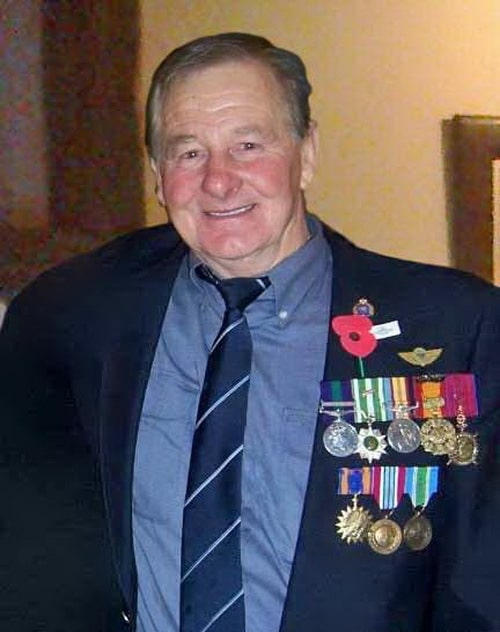
Military veterans more so than most in NZ are exposed repeatedly during their service careers to the Rules, protocol and accepted practices for wearing medals, both in and out of uniform. Military medal wearing regulations are categoric and do not change substantially for persons no longer serving. Indeed the protocol applied in military service large remains extant to those embodied in the Rules for that govern all NZ citizens who wear medals, and are expected to follow – ignorance of these Rules by those in the ex-service community is no defence for non-compliance!
In spite of the above, there are ‘Posers’ who seem to believe they have some pre-ordained right to side-step the Rules (and ignore their training) by knowingly flouting the accepted protocol and conventions of medal wearing, hoping that no-one will notice – quite wrong, there is always someone that will know!
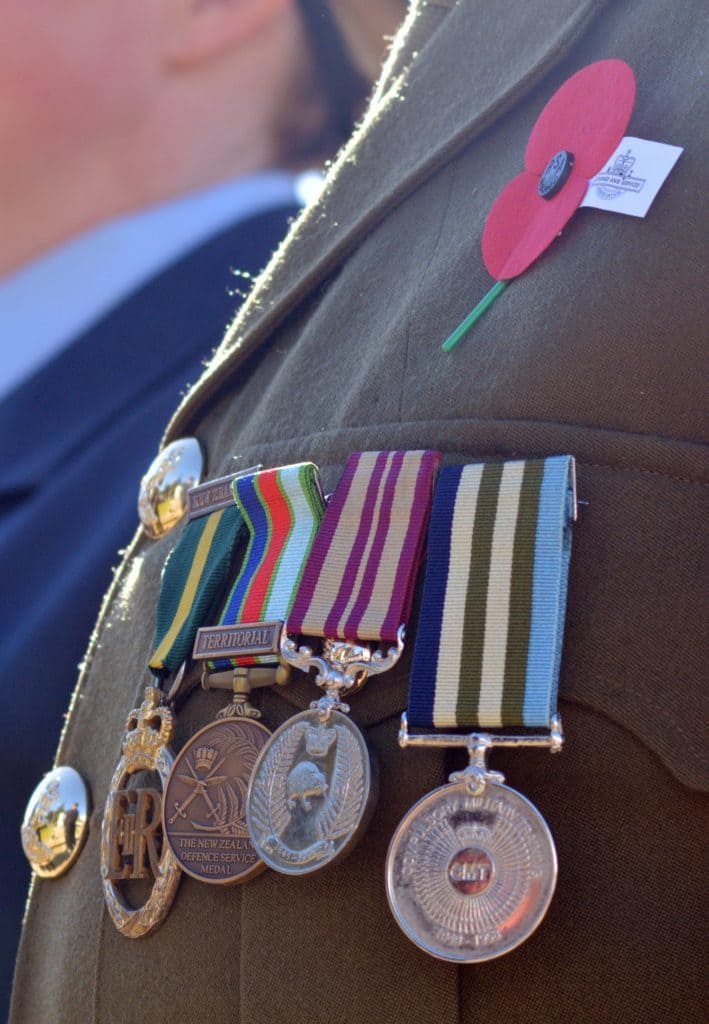
Medal Cheats can be prosecuted under the Summary Offences Act 1981 when in contravention of Section 46 of the Military Decorations and Distinctive Badges Act 1918.
3. WANNABE (want-to-be)
Wannabes all have one thing in common; for whatever reason they feel the need to fraudulently misrepresent themselves and their military service (if any) by wearing medals, badges, uniform and/or accoutrements, NZ and foreign, to which they have no entitlement to wear.
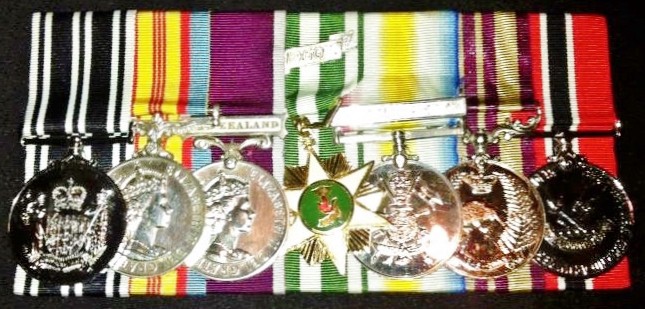
A Wannabe may have no military service, some service (discharged for disciplinary issues, unsuitability, or on medical grounds), or a whole career of uniformed service behind them. These individuals may wear unofficial / vanity / junk / medals (and badges), items of military dress like a beret, in order to represent themselves (usually badly) as a former uniformed Veteran or a Returned Veteran.
Wannabes can often be seen in an ex-Service organisation such as the NZRSA, or RSL in Australia, sometimes seeking (or accept) a responsible position or appointment which if secured, provides the opportunity to ‘strut their stuff’ wearing self-awarded medals with impunity. Medals in the minds of these people equate to being a military veteran and therefore are the visual evidence they have ‘been there and done that’ thereby lending apparent legitimacy to the appointment. Adding an official name badge that includes words like President, Vice-President, Executive etc, and the wearing of the organisation or a military unit’s blazer pocket badge, to all outward appearances can reinforce the Wannabe’s status as a bona fide veteran, befitting their deluded ego. Having an official appointment in such an organisation can help the Wannabe to enhance the legitimacy of their faked veteran status, and deflecting undue scrutiny of any medals worn.
Wannabes tend to be more prevalent in smaller or isolated towns and rural areas where they have developed some standing or are well known. Under these conditions it is much easier for a Wannabe to pretend Returned Veteran legitimacy veteran by wearing whatever medals they wish without being challenged, comfortable in the knowledge that the local population is unlikely to be completely unaware the medals are fake or that the Wannabe is pretending a veteran’s status they don’t have.
Wannabees can be prosecuted under the Summary Offences Act 1981 when in contravention of Section 46 of the Military Decorations and Distinctive Badges Act 1918
4. MILITARY IMPOSTOR
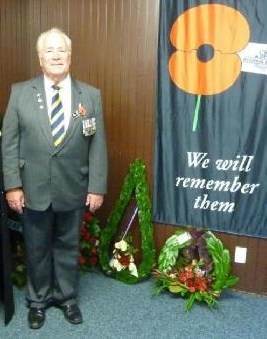
A Military Impostor fraudulently pretends uniformed service of the Crown when they have had none. These individuals are often characterised by naive attempts to deceive others by wearing any combination of uniforms with medals, ribbons, badges and other accoutrements to which they have no entitlement. Those who have been caught represent the lower, less determined Imposter as opposed to one who intentionally sets out to act on behalf of a determined enemy of the state.
Most Impostors (male and female) encountered in NZ have been weak attempts by deluded individuals who more often than not have represented themselves unconvincingly with some sort of grandiose persona related to being a Returned Veteran, catching any listener’s attention with tales of heroic or secretive daring do. To some extent it is all about feeding an ego, wearing the gear that identifies with a particular person or group who the Impostor idolises. The most popular ruses used are those that purport to have seen the Impostor in action with special forces such as the SAS, snipers or black ops operatives. Others include clearance divers, parachutists, warfare officers, helo and fighter pilots, all occupations chosen to attract adulation from an unknowing audience, but rarely believable. Impostors tend to be easily unmasked by their own naivety, a lack of knowledge of who they are attempting to impersonate, and a lack of attention to correctness – poor personal appearance, confusing dress combinations, wearing replica or ‘junk’ medals and badges, medals incorrect arranged (out of sequence). Their ‘backstory’ will often not stand up to scrutiny by authentic veterans or serving personnel. The Impostor will generally lack the specifics of his pretended involvement or the general military knowledge that person would be expected to have, thereby failing to adequately answer searching questions.
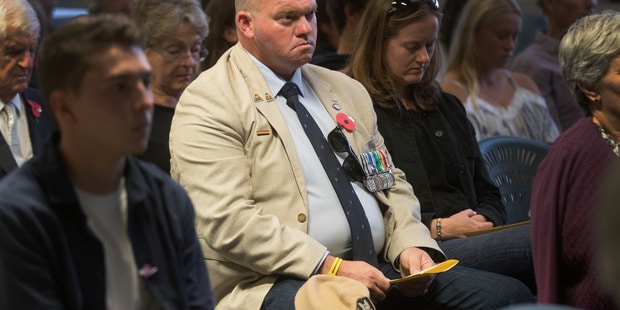
http://www.nzherald.co.nz/nz/news/article.cfm?c_id=1&objectid=11847723
More sophisticated Military Impostor attempts are rare. These tend to present as believable both in appearance and back story. An Impostor may carry a counterfeited or stolen Identity Card, dog tags, stolen or replica medals/badges etc in order to represent themselves as either a serving or former military/uniformed service veteran, for the purposes of gaining access and/or personal prestige – read more here … http://www.stuff.co.nz/national/crime/9773280/SAS-phony-ignored-warning
Military Impostors are breaking the law and can be prosecuted under the Crimes Act 1961 (Fraud, Trespass, etc); and the Summary Offences Act 1981, contrary to Section 46 of the Military Decorations and Distinctive Badges Act 1918.
Medical issues
It should be born in mind before confronting any apparent transgressing fraudster, there may be a medical situation they are subject to which is causing them to behave as any of the above. Whilst not a reason to not confront and question what and why a purpertrater is wearing or behaving questionably, there may be an underlying cause. For instance: an apparent Medal Cheat may draw undue attention to themselves by being excessively bedecked in a mixed array of medals, worn haphazardly and to genuine veterans looks plainly ridiculous. An array of mixed medals and badges, poorly mounted and an apparent absence of embarrassment in wearing these, may also be an indication that while no actual fraud is intended, the wearer may have issues of mental stability. These situations therefore should be handled with care and preferably by seeking the assistance of qualified professionals before any thoughts of taking the apparent ‘medal cheat’ to task.
Last word …
Valour Thieves, Medal Cheats, Wannabees and Impostors are abhorred by the serving military and veteran communities. Once exposed, offenders can expect to be treated with some derision and disdain by often very unforgiving veterans. Fraudsters of any type should be reported to the relevant authorities without delay, either the Executive of the organisation concerned, or the Police.
Note: If you suspect a person of being a medal or military fraudster but are unsure of your facts, ask the advice of an experienced Veteran whom you can trust – they will know what to do.
~~~~~~<< END >>~~~~~~
